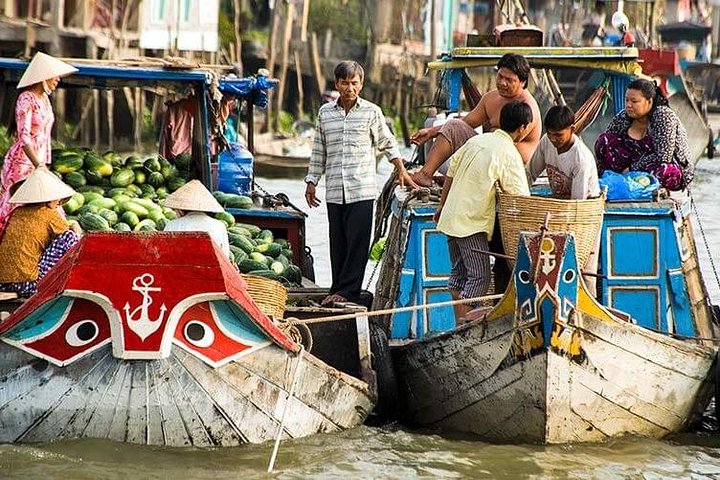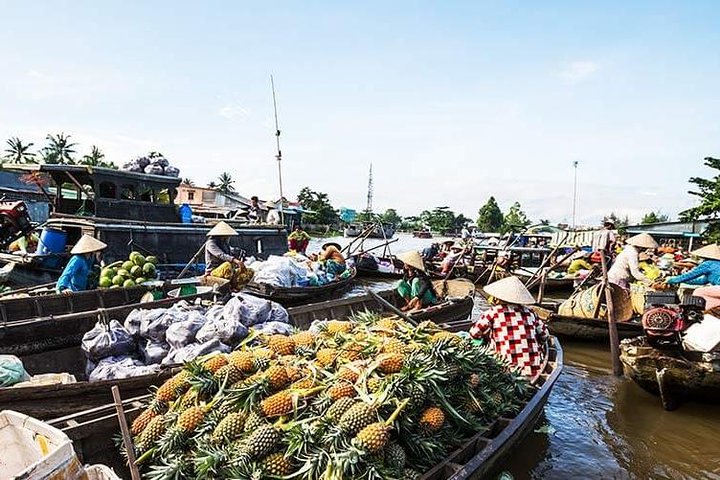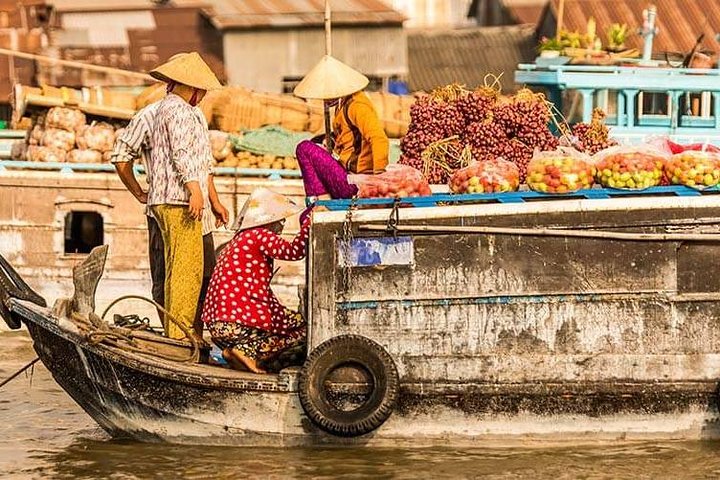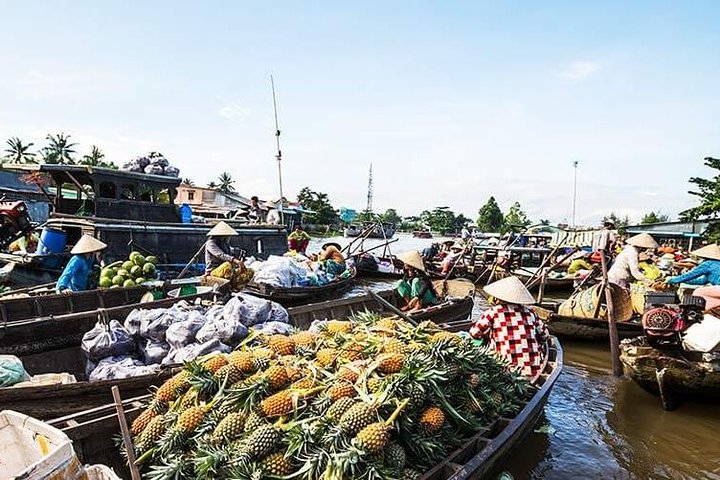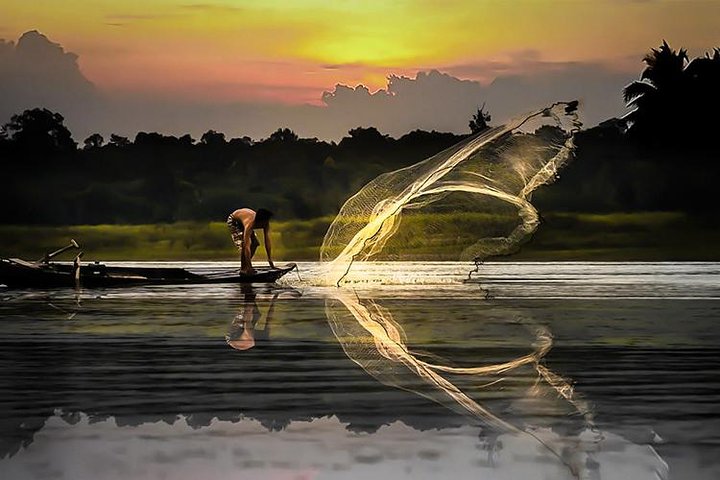Explore Saigon’s rich history and culture with a shore excursion. Visit war relics, French colonial architecture, and vibrant markets. Discover Vietnam’s past and present.
Explore Saigon’s rich history and culture with a shore excursion. Visit war relics, French colonial architecture, and vibrant markets. Discover Vietnam’s past and present.
- History Museum of Ho Chi Minh City - Established in 1929, this distinguished Sino-French museum boasts a rich collection of artifacts showcasing the cultural evolution of Vietnam, from the Bronze Age Dong Son civilization (emerging in 2000 BCE) and the Funan civilization (1st to 6th centuries CE) to the Cham, Khmer, and Vietnamese cultures….
- History Museum of Ho Chi Minh City - Established in 1929, this distinguished Sino-French museum boasts a rich collection of artifacts showcasing the cultural evolution of Vietnam, from the Bronze Age Dong Son civilization (emerging in 2000 BCE) and the Funan civilization (1st to 6th centuries CE) to the Cham, Khmer, and Vietnamese cultures. Notable exhibits include precious relics from Cambodia’s Angkor Wat and an impressive array of Buddha statues. The museum provides excellent English information, although some sections are under renovation.
Additionally, the museum features a well-preserved mummy of a local woman who passed away in 1869, discovered in Xom Cai in District 5, along with exquisite mother-of-pearl Chinese characters inlaid into panels. It is conveniently located next to the Botanical Gardens.
The museum also highlights the diverse cultures of ethnic groups in Southern Vietnam and other Asian countries, showcasing their clothing, unique musical instruments, deity statues, and tools related to agriculture, hunting, and fishing.
- Emperor Jade Pagoda - Constructed in 1909 to honor the supreme Jade Emperor (King of Heaven), this is one of the most atmospheric temples in Ho Chi Minh City, filled with statues of mystical divinities and heroic figures.
The air is thick with the fragrant smoke of incense, partially obscuring the intricate woodcarvings. The temple’s roof is adorned with elaborate tile work, and its statues, representing characters from both Buddhist and Taoist traditions, are crafted from reinforced papier mâché.
The temple’s multifaith nature is reflected in its alternative name, Phuoc Hai Tu, which conveys a Buddhist message. Similarly, the Chinese characters in the main temple hall mean ‘The light of Buddha shines on all.’ Over a century has passed with many changes, yet the Jade Emperor Pagoda retains its timeless charm. Its beauty harmoniously combines the three main religions of the Orient: Taoism, Buddhism, and Confucianism.
Thanks to its impressive and unique beauty, along with its sacred legend, this is one of the most remarkable destinations.
- Sơn mài Đại Việt - The lacquer is actually the resin of a tree, mixed with colored pigments and solvents, and applied in layers to the object’s surface, resulting in a shiny and durable finish. Eggshell and mother of pearl may be added to the surface before the lacquer is applied, with the final product sanded down to reveal the decoration beneath.
The high quality of resin from Vietnamese lacquer trees, particularly those in Phu Tho, was a key factor in the rapid development of this art form during the feudal period. Decorated lacquer statues, panels, boxes, and trays (1428-1527) can still be seen in many temples and pagodas.
In later centuries, the use of lacquerware expanded to larger items such as wooden chairs and tables. Since then, lacquerware has continued to evolve into a cornerstone of the Vietnamese handicraft industry, both domestically and internationally. Today’s most popular items include vases, jewel cases, desk sets, trays, and vertical blinds.
- War Remnants Museum - Established on September 4, 1975, the War Remnants Museum is a member of the International Network of Museums for Peace (INMP) and the International Council of Museums (ICOM).
It is the only museum in Vietnam dedicated to systematically studying, collecting, conserving, and displaying exhibits on war crimes and the consequences inflicted on the Vietnamese people by foreign aggressive forces. At the same time, the museum encourages everyone to oppose unjust wars, preserve global peace, and promote friendship and solidarity among nations.
The museum features 9 permanent thematic exhibitions and various special collections. Throughout the year, a wide range of activities are organized, including conferences, meetings with war witnesses, and temporary and traveling exhibitions. With nearly one million domestic and international visitors annually, the War Remnants Museum is one of Ho Chi Minh City’s most captivating cultural and tourist attractions.
- The Independence Palace - Surrounded by royal palm trees, the striking 1960s architecture of this landmark government building and the eerie atmosphere of its empty halls make it a fascinating sight. The first Communist tanks to reach Saigon arrived here on April 30, 1975, and it seems as if time has stood still since then. The building is closely associated with the fall of the city in 1975, yet it’s the kitsch detailing and period motifs that capture attention. Also known as the Independence Palace, the building was home to the succeeding South Vietnamese president, Nguyen Van Thieu, until his hurried departure in 1975. Designed by Paris-trained Vietnamese architect Ngo Viet Thu, it is an outstanding example of 1960s architecture, with an airy and open atmosphere.
The Reunification Palace, also known as Independence Palace, is a landmark building located in the heart of Ho Chi Minh City. It is recognized as a must-see National Monument when visiting Ho Chi Minh City.
- Museum of Ho Chi Minh City - A grand neoclassical structure built in 1885 and formerly known as Gia Long Palace, HCMC’s city museum is a uniquely beautiful and impressive building, narrating the city’s story through archaeological artifacts, ceramics, old city maps, and displays on the marriage traditions of its various ethnicities. The struggle for independence is extensively covered, with most of the upper floor dedicated to it.
Beneath the building lies a network of reinforced concrete bunkers and fortified corridors. This system, with branches extending to the Reunification Palace, included living areas, a kitchen, and a large meeting hall. In 1963, President Diem and his brother hid here before fleeing to Cha Tam Church. The network is not open to the public as most of the tunnels are flooded.
In the gardens, various pieces of military hardware are displayed, including the American-built F-5E jet used by a renegade South Vietnamese pilot to bomb the Reunification Palace on April 8, 1975.
- Central Post Office - The city’s iconic French-era post office is a period classic, designed by Marie-Alfred Foulhoux (though often attributed to Gustave Eiffel) and constructed between 1886 and 1891. A mosaic of Ho Chi Minh is prominently displayed at the end of its barrel-vaulted hall.
The post office features a distinctive, bright yellow exterior with white trim. Curved windows are elegantly framed with green shutters, and a large clock is prominently featured at the building’s main entrance. The stunning, spacious interior boasts tall, domed ceilings with metal arches and a beautiful patterned tile floor. Inside the office, there are two painted maps – Lignes télégraphiques du Sud Vietnamet du Cambodge 1892 (Telegraphic lines of southern Vietnam and Cambodia 1892) depicts the postal route from southern Vietnam to Cambodia, and on the right side of the building is Saigon et ses environs, 1892 (Saigon and its surroundings), a local map.

- All entrance fees
- Bottled water
- English speaking tour guide
- Air-conditioned vehicle
- Pick up and drop off at Saigon Port, No.05 Nguyen Tat Thanh street, district 4
- All entrance fees
- Bottled water
- English speaking tour guide
- Air-conditioned vehicle
- Pick up and drop off at Saigon Port, No.05 Nguyen Tat Thanh street, district 4
- Extra charge $30 USD/ each by cash on tour for picking up & dropping off at Hiep Phuoc JSC or SPTC
- Tipping/ gratuities, personal expenses
- Extra charge $30 USD/ each by cash on tour for picking up & dropping off at Hiep Phuoc JSC or SPTC
- Tipping/ gratuities, personal expenses
Ho Chi Minh City, also known as Saigon and long considered as the Pearl of the Far East, is the most dizzying city of commerce and culture in Vietnam. A visit to Saigon is like an encounter with exotic delicious food, French colonial architecture and memories of Vietnam War.
A state-run handicraft enterprise exports a wide range of products—including…
Ho Chi Minh City, also known as Saigon and long considered as the Pearl of the Far East, is the most dizzying city of commerce and culture in Vietnam. A visit to Saigon is like an encounter with exotic delicious food, French colonial architecture and memories of Vietnam War.
A state-run handicraft enterprise exports a wide range of products—including furniture, carpets, lacquer paintings, and other works of art—made largely from local materials and you will be shown a part of this attraction.
There are so many amazing attractions and you will have a chance to discover apart of those such as War Remnants Museum to learn more about Vietnam War, Jade Emperor Pagoda to learn more about a part of Vietnamese culture. Saigon Central Post Office is known as Center of Telegraph in Indochina War or exploration the National Monument of Reunification Palace, Vietnam History Museum to learn more about history of Vietnam; Ho Chi MInh City Museum is to learn about Trading Centre of South Vietnam.
- The remaining hours are allotted for the travel time.
- Every one can join this tour
For a full refund, cancel at least 24 hours before the scheduled departure time.
For a full refund, cancel at least 24 hours before the scheduled departure time.















